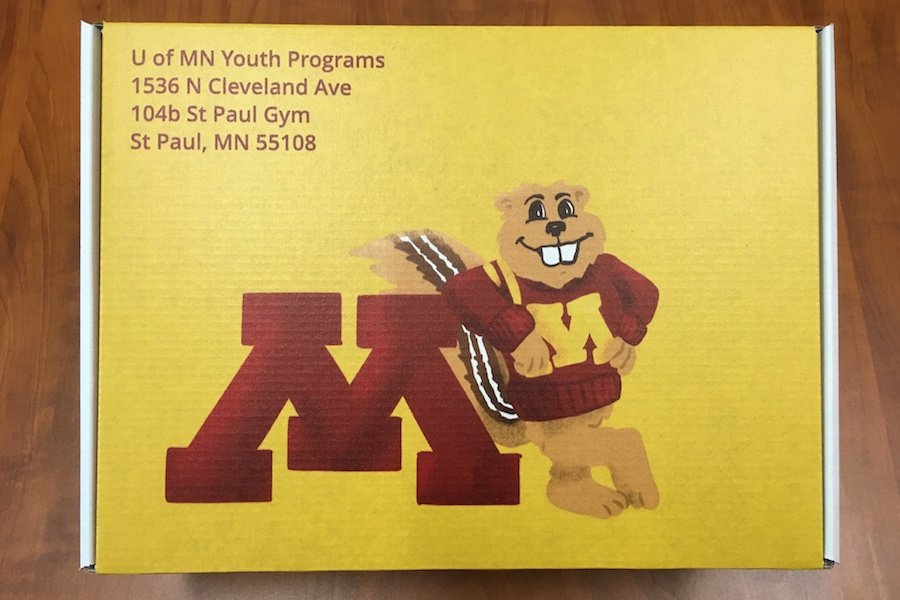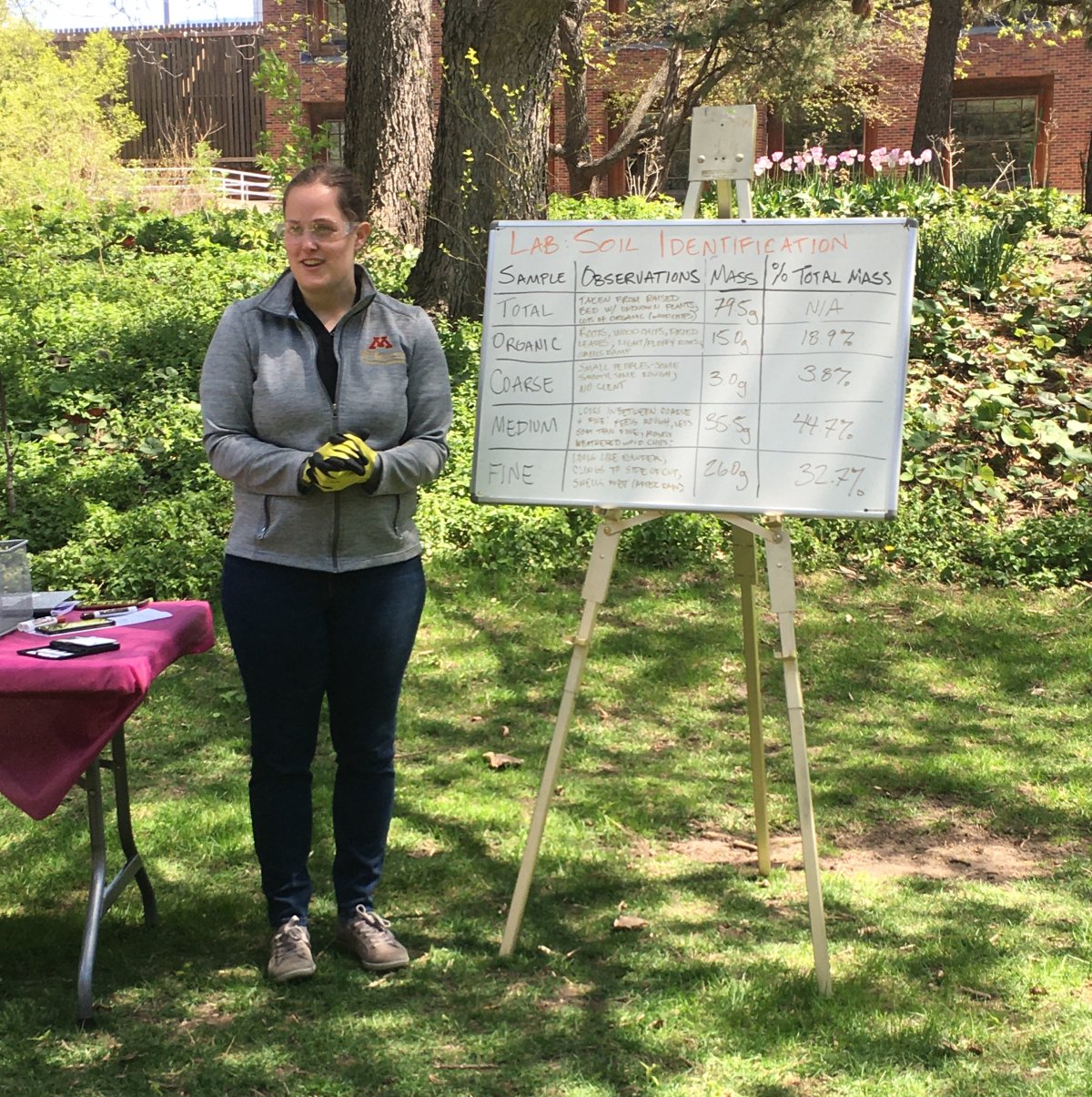The U of M STEM experience packed in a box

Above: An image of Goldy on the outside of the box, which families receive.
Photo credit: U of M Youth Programs
Camp-in-a-box program offers STEM learning at home
May 18, 2021
While many K-12 students will not be coming to the University of Minnesota for in-person STEM camps this summer, a U of M team has found a way to bring the Twin Cities campus to them. Through “Camp-in-a-box,” students can learn about earth and environmental sciences in their backyards and neighborhoods.
Dubbed “How the Earth Works,” the outreach series consists of three boxes—with themes of geology, hydrology, and atmospheric sciences—full of do-it-yourself experiments and learning tools.
Starting in June, families can buy the boxes individually or subscribe to get one per month throughout the summer. The program offers scholarships for those with financial need. The curriculum is designed to be self-guided—everything students will need comes in the box.
“We selected the topic [of earth sciences] because it allows us to get the students outside,” said College of Science and Engineering Assistant Director of Outreach Kelsi Klaers, who worked with U of M Recreation and Wellness (RecWell) to create the program.
“We’re all living in this virtual space so much,” Klaers added, “that we thought it was really important to get students out of their houses and away from their screens.”
Klaers, whose background is in environmental science, was recruited by the RecWell’s Youth Programs to design the camp-in-a-box curriculum. She taught a similar virtual course for the U of M College of Education and Human Development’s TRIO Upward Bound outreach program last summer after COVID-19 canceled most of the University’s activities.
“[Camp-in-a-box] was an idea that was created during the pandemic as a way to keep kids active and engaged,” said Venessa Fiedler, the manager of RecWell’s Youth Programs. “With the uncertainty around what the summer would look like as our public health situation unfolds, this was one avenue we identified as a way to stay connected.”
“Kelsi has been doing awesome things for the youth she works with at CSE, and our program has benefited by being able to be a conduit to provide those learning opportunities to more kids,” Fiedler said.

What’s in the box?
The geology box will have students collecting rock and soil samples and identifying them using various tests to calculate features like density and hardness. The hydrology course focuses on permeability—how easily water flows through different materials—and stream water testing. In the atmospheric sciences box, students will find the tools to make a barometer that measures air pressure and learn how the atmosphere relates to weather.
One of the goals of the course is to encourage the students to see science working in their own communities.
“I really like that we’re having them take rock and soil samples from their own backyard and community,” Klaers said.
“In particular during the pandemic, this is important because it helps them remember why all of that classroom learning, all of the Zoom meetings they’ve been subject to, are relevant,” she added.
Targeted outreach
Each year, more than 50,000 K-12 students participate in the College of Science and Engineering's STEM programs. This is in large part thanks to high-capacity programs like Physics Force and Energy and U, which together have reached about 150,000 kids and adults over the five years before COVID-19.
While Klaers said it’s obviously important to give back to the community surrounding the U of M, another goal of the camps is to equip the next generation of students and encourage them to pursue higher education and STEM.
“We talk about outreach being like a bulls-eye or target,” she said. “CSE is the center, then the U of M [is the next ring], and then it grows out. We might be aiming for the center, but we’re happy if the students from our programs land anywhere on the board, and by that I mean any type of post-secondary enrollment. If they’re going into STEM at all, that’s great.”
Despite the downsides of the pandemic, remote outreach also has its benefits, Klaers said. Being able to ship the boxes anywhere increases access for people who may live out-of-state or can’t come to campus for in-person camps.
And, now that they have the tools to do it, Klaers and her collaborators might continue camp-in-a-box post-pandemic.
“The pandemic has been horrible in so many ways, but it has also been a huge catalyst for innovation, like these camp-in-a-boxes,” she said.
“I think that a lot of what we’ve learned this year is learning how to expand our reach to populations we haven’t been able to serve before,” Klaers said.
Learn more about and sign up for the “How the Earth Works” camp-in-a-box program and other summer camps on the Recreation and Wellness website.
Find more information on CSE STEM camps on the K-12 outreach webpage.
Story by Olivia Hultgren
